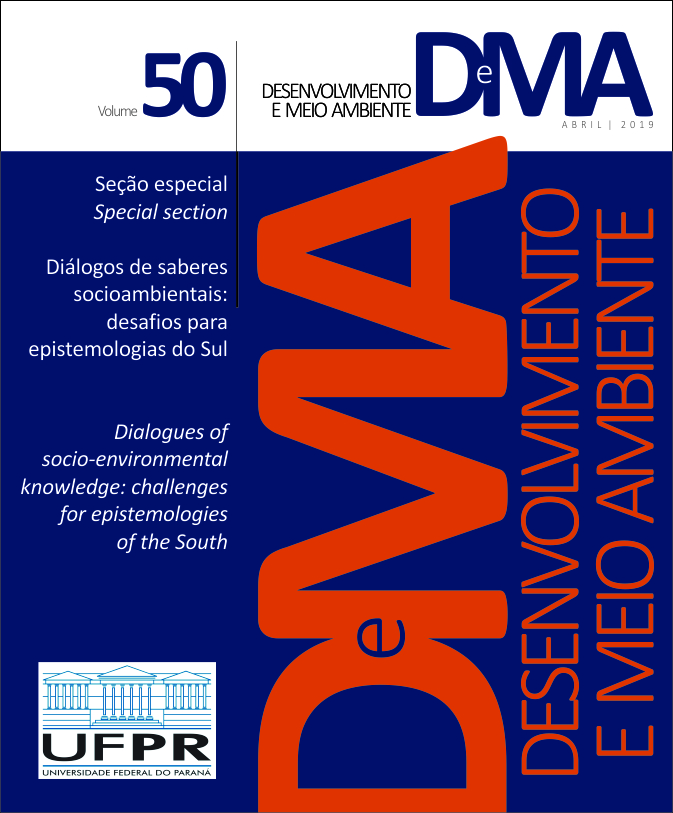Seeds network and collective action for the restoration and conservation of Xingu River’s springs (Mato Grosso, Brazil)
DOI:
https://doi.org/10.5380/dma.v50i0.59435Palavras-chave:
Xingu River, environmental governance, restoration of permanent preservation areas, collective actionResumo
In 2017, indigenous and non-indigenous people from the Xingu-Araguaia region met in Mato Grosso to celebrate 10 years of partnership and collective action of the Xingu Seeds Network (XSN). This network originated from the Campaign `Y Ikatu Xingu, a social phenomenon concerning conservation and protection of the Xingu spring region. The river basin of the Xingu headwaters, 17 million hectares, is the main focus of XSN and it has lost five million hectares of forests and cerrados, which were converted into grain monoculture fields, within a very short period of time. The impact on the quality of the river water caused an environmental and health problem for the indigenous peoples of the indigenous lands. XSN has promoted innovative technological alternatives for recovery of permanent preservation areas (PPAs) or gallery forest and income generation for small farmers and local communities. The goal of this study is to analyze the environmental governance in the Xingu basin, paying particular attention to institutional arrangements of the Xingu Seeds Network. This analysis is grounded on the theoretical-methodological framework, contained in the Institutional Analysis and Development (IAD), which offers tools for understanding the strengthening process of democratic institutions in the protection of common-pool resources. These are permanent preservation areas, in Brazilian case. This study provides a reflection of governance mechanisms, based on the "Commons Theory", in regions where socioeconomic dynamics drastically modify the tropical ecosystems that are fundamental to wildlife and human life.
Downloads
Publicado
Como Citar
Edição
Seção
Licença
Os Direitos Autorais sobre trabalhos publicados nesta revista são do autor, com direitos de primeira publicação para a revista. O conteúdo dos trabalhos publicados é de inteira responsabilidade dos autores. A DMA é um periódico de acesso aberto (open access), e adota a licença Creative Commons Atribuição 4.0 Não Adaptada (CC-BY), desde janeiro de 2023. Portanto, ao serem publicados por esta Revista, os artigos são de livre uso para compartilhar (copiar e redistribuir o material em qualquer suporte ou formato para qualquer fim, mesmo que comercial) e adaptar (remixar, transformar, e criar a partir do material para qualquer fim, mesmo que comercial). É preciso dar o crédito apropriado, prover um link para a licença e indicar se mudanças foram feitas.
Os conteúdos publicados pela DMA do v. 53 de 2020 ao v. 60 de 2022 são protegidos pela licença Creative Commons Atribuição – Não Comercial – Sem Derivações 4.0 Internacional.
A DMA é uma revista de acesso aberto desde a sua criação, entretanto, do v.1 de 2000 ao v. 52 de 2019, o periódico não adotava uma licença Creative Commons e, portanto, o tipo de licença não é indicado na página inicial dos artigos.




